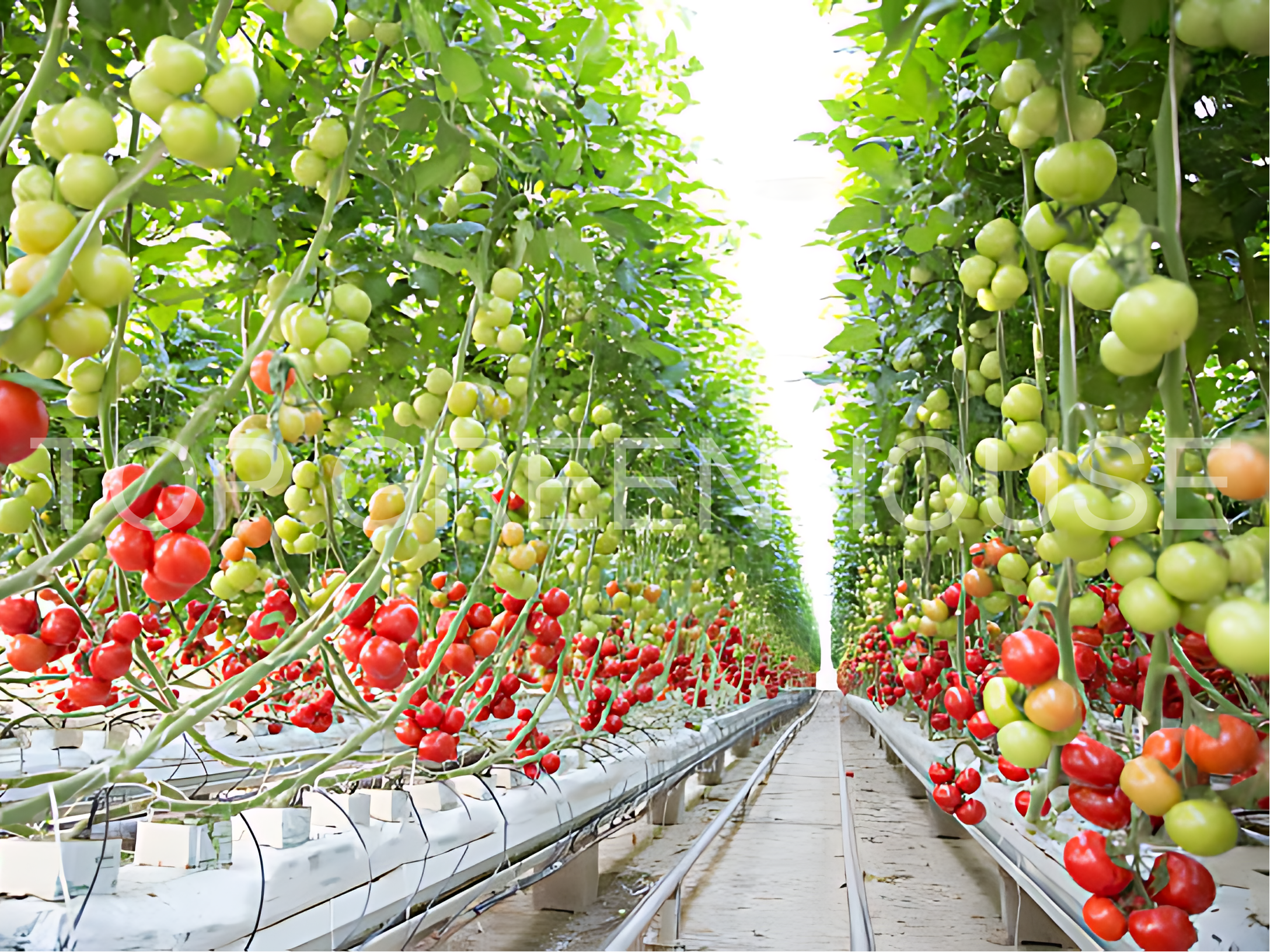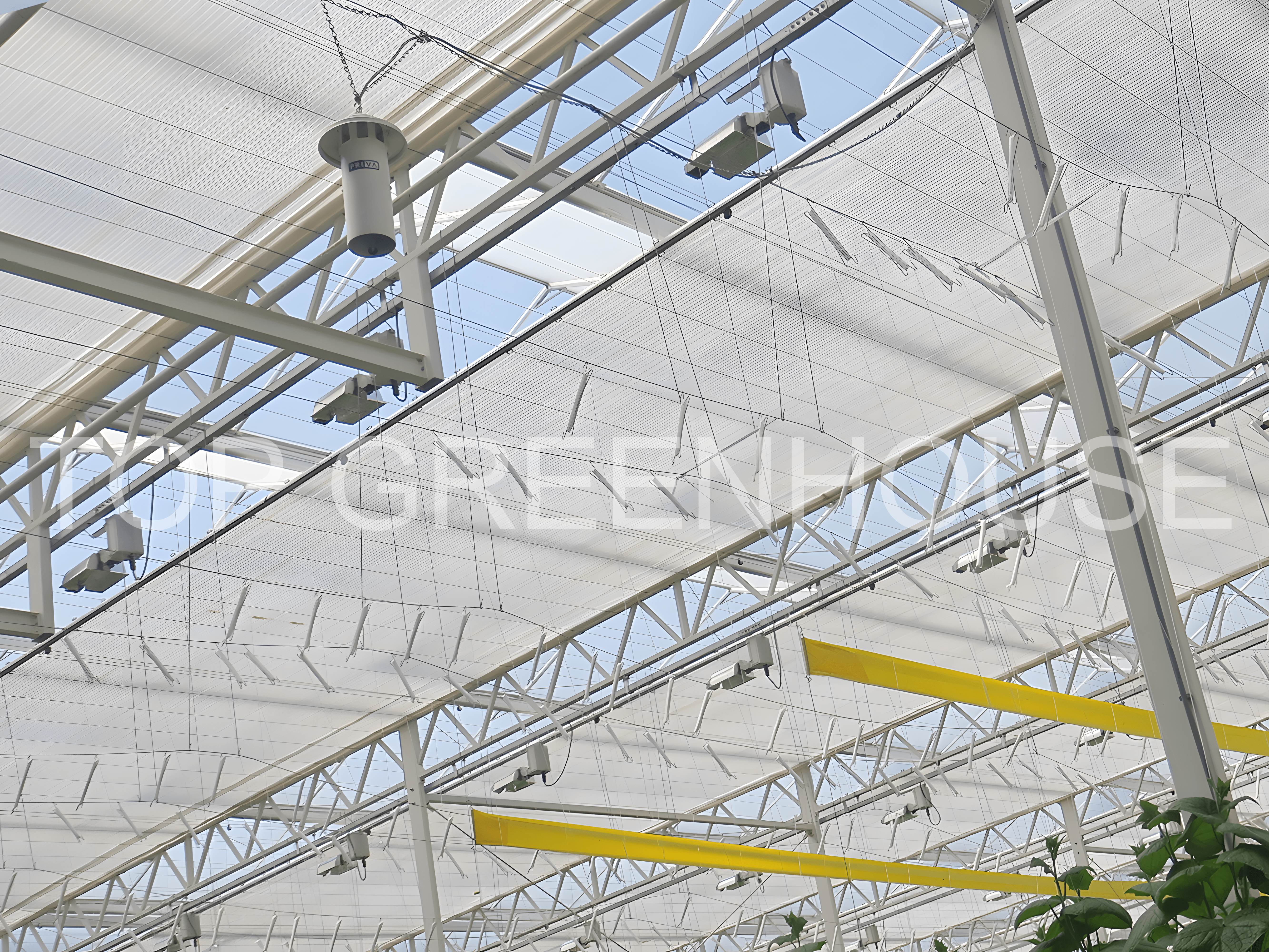+86-18961180163
- All
- Product Name
- Product Keyword
- Product Model
- Product Summary
- Product Description
- Multi Field Search
Views: 0 Author: Site Editor Publish Time: 01-08-2025 Origin: Site
Optimal Shading Solutions for Tomato Cultivation in Greenhouses
Growing tomatoes in regions with intense sunlight or high temperatures often leads gardeners to consider shade cloth as a tool for reducing heat stress, sunscald, and moisture loss. But how much shade do tomato plants actually need to thrive? Selecting the correct shade cloth percentage is a critical decision: too little shade, and your plants may suffer; too much, and they might not receive enough light for optimal fruit production. In this article, we'll explore the ideal shade cloth percentage for tomatoes, when and how to apply shading, the best colors to use, the reasons behind common issues like splitting skins, and whether tomatoes can flourish under shaded conditions.

Tomato plants require a delicate balance of sunlight—enough to power photosynthesis and fruit ripening, but not so much that foliage burns or fruits develop sunscald. The choice of shade cloth percentage typically ranges from 20% to 60%, indicating how much sunlight the material blocks.
Ideal for most temperate climates where midday sun is strong but not excessively hot. It reduces light intensity by 20%, allowing 80% of ambient sunlight through. This level of shading can help cool plants by a few degrees Fahrenheit without significantly impeding photosynthesis.
A common choice in warmer regions, especially during peak summer months. Blocking 30–40% of sunlight can lower canopy temperature by 3–5°F, reducing heat stress and sunscald risk while still supporting robust growth and fruit set.
Best reserved for extremely hot and arid climates where daytime highs regularly exceed 95°F (35°C). While such heavy shading can prevent sunburn and excessive water loss, it also cuts the light available for fruiting, so growers often use it only during the hottest part of the season or during heat waves.
In general, a 30% shade cloth strikes a balance between cooling and light transmission and is often recommended for most home gardeners dealing with moderate to high summer temperatures.

Knowing the right timing for installing shade cloth can make a big difference in both crop yield and fruit quality. Here are key considerations:
Begin shading when daytime temperatures consistently reach 85–90°F (29–32°C), as tomato photosynthesis and fruit set start to decline above these levels.
For greenhouse or hoop-house growers, monitor internal temperatures as well; shading is warranted when internal peaks exceed 95°F (35°C).
In most regions, shading becomes critical from mid-summer through early fall, coinciding with the longest and hottest days.
In greenhouse settings, shade cloth may be applied year-round in tropical climates or removed entirely during cool seasons to maximize light.
Install permanently above plants if you live in an ultra-hot climate.
For variable conditions, consider rolling or retractable shade systems, deploying shading between 10 AM and 4 PM, when solar intensity and heat are highest.
Shade cloth is useful during heat waves or periods of intense solar radiation, even if daily averages are moderate.
Conversely, remove or retract shading after a cold front or during cloudy stretches to ensure plants receive sufficient light.
Proper timing not only prevents stress but also avoids unnecessary reductions in light during cooler parts of the season, ensuring the plants continue vigorous growth and fruit development.
Shade cloth comes in various colors, each affecting light spectrum, heat retention, and plant responses differently:
The most common and affordable.
Provides neutral shading by absorbing heat and diffusing light evenly.
Effective at lowering temperatures but can lead to slightly warmer microclimates under the canopy due to heat absorption.
Reflects a portion of sunlight, reducing heat absorption.
Creates a brighter environment under the cloth, promoting more uniform growth.
Often used in areas with extreme heat to keep canopy temperatures lower than under black cloth.
Blends into garden environments aesthetically.
Offers similar shading percentage to black cloth but may transmit slightly different light spectra, favoring vegetative growth.
A high-end option made of reflective aluminum-coated fabric.
Blocks up to 50–75% of infrared heat while allowing PAR (photosynthetically active radiation) to pass.
Excellent for extreme heat mitigation, though pricier.
For most tomato growers, 30–40% black shade cloth offers the best combination of performance and affordability. In extremely hot regions, pairing a white reflective cloth or Aluminet with a 30% density can further reduce canopy temperatures without unduly compromising light.
Tomato skin splitting (or cracking) is a common phenomenon, and while shade cloth can help, it's important to understand the root causes:
Fluctuating Moisture Levels: The primary culprit. After a dry spell, heavy rainfall or overzealous irrigation can cause fruits to absorb water rapidly, swelling faster than the skin can stretch.
Rapid Temperature Changes: Sudden heat or cold shocks can disrupt plant water balance, exacerbating splitting.
Fruit Size & Variety: Larger-fruited tomatoes (e.g., beefsteak types) are more prone to splitting due to greater internal pressure. Some heirloom varieties also have thinner, less elastic skins.
Maturity Stage: Ripe or nearly ripe fruits are at highest risk, as skin has thinned and softened.
Cultural Practices: High-nitrogen fertilization can lead to lush growth and large fruits, increasing split risk. Inadequate pruning and poor air circulation can amplify moisture fluctuations around fruit clusters.
While shade cloth alone doesn't prevent cracking, it helps moderate temperature extremes and slow evaporation, reducing the amplitude of moisture swings. For best results, combine shading with consistent irrigation practices, mulching to stabilize soil moisture, and selecting crack-resistant varieties.
Yes—tomatoes can and do grow successfully under shade cloth, provided the shading level matches the environmental conditions:
Light Requirements: Tomatoes need at least 6–8 hours of quality light daily for adequate photosynthesis and fruit set. Under 30–40% shade cloth, they still receive roughly 60–70% of ambient sunlight, enough for healthy growth.
Temperature Management: Shade cloth can reduce canopy and soil temperatures by 3–7°F (1.5–4°C), lowering stress and maintaining metabolic processes within optimal ranges.
Disease & Pest Benefits: Cooler, less humid conditions under shade reduce the incidence of sunscald, foliar diseases, and some insect pests that thrive in extremes.
Yield Considerations: While a slight reduction in total light can theoretically reduce maximum potential yield, the benefit of reduced stress typically yields larger, higher-quality fruits and more uniform harvests—especially in heat-stressed environments.
In essence, rather than "growing under shade cloth," tomatoes benefit from a moderated environment that mimics ideal light and temperature conditions. Many commercial greenhouse operations rely on shading year-round in hot climates, underscoring its viability.
| Property | Black Shade Cloth | White (Reflective) Shade Cloth |
|---|---|---|
| Heat Absorption | Absorbs and retains heat; can warm | Reflects infrared; cooler under canopy |
| Light Quality | Diffuses light uniformly; duller | Brighter light; more diffuse, higher PAR ratio |
| Cost & Durability | Widely available; durable; affordable | Slightly higher cost; may degrade faster |
| Aesthetics | Discreet, blends into environment | More conspicuous, industrial look |
Thermal Advantage: White or reflective cloth reduces canopy temperature more effectively—by up to an additional 2–3°F on very hot days—than black cloth of the same density.
Light Diffusion: Both colors diffuse harsh direct rays, but white cloth's reflectivity enhances side-lighting, leading to more uniform leaf illumination.
Cost-Benefit: Black shade cloth is typically 10–20% cheaper per yard and has a proven track record in home gardens and commercial nurseries.
Recommendation: In regions where daytime highs seldom exceed 95°F (35°C), a 30–40% black shade cloth is sufficient and most cost-effective. In hotter deserts or during prolonged heat waves, upgrading to a white reflective cloth or Aluminet will better protect fruit quality and prevent sunscald.
Selecting the right shade cloth for tomatoes involves balancing the benefits of reduced heat stress, sunscald protection, and moisture conservation against the need for ample light to fuel growth and fruiting. Here are the key takeaways:
Shade Percentage: Aim for 30–40% in most conditions; increase to 50–60% only in extreme heat or for short-term shading during heat waves.
Timing: Deploy shade when daily highs exceed 85–90°F (29–32°C) or when midday sun intensity poses a risk to blossoms and fruit.
Color Choice: Black shade cloth is the go-to for balanced performance and value; white or reflective options offer superior heat rejection in the hottest climates.
Plant Health: Shade cloth moderates canopy temperature and light intensity, minimizing sunscald and reducing splitting by curbing extreme moisture fluctuations.
Yield & Quality: While heavy shading can marginally reduce maximum yield, the improved fruit quality, uniform ripening, and lower stress often translate to better overall harvests, especially in challenging environments.
By understanding your local climate, monitoring temperature and UV intensity, and selecting the appropriate shade cloth percentage and color, you'll ensure that your tomato plants enjoy a comfortable growing environment—resulting in bountiful, healthy, and delicious fruits all season long.
Greenhouse Tomato Shade Solutions © 2025 | TOP Greenhouse